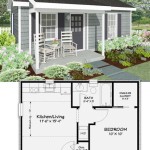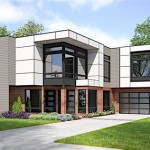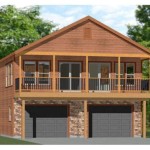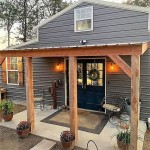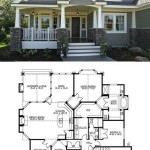Gothic house plans have been popular for centuries, and today they remain a great option for homeowners looking to create a unique and distinctive home design. Gothic house plans are characterized by their steeply pitched roofs, elaborate ornamentation, and intricate detailing. From large castles to quaint cottages, Gothic house plans can be adapted to fit any size or style of home. Here are some tips for creating an authentic Gothic house plan.
Start with a Classic Gothic Design
When creating a Gothic house plan, it’s important to start with a classic design that is rooted in historical accuracy. A traditional Gothic house plan will typically feature steeply pitched gables, arched windows, pointed roofs, and intricate details. While it’s possible to create a modern interpretation of the Gothic style, it’s important to stay true to the original design elements in order to create a truly authentic look.
Focus on Ornate Details
One of the defining features of Gothic house plans is their ornate detailing. From intricate window tracery to elaborate cornices and finials, a Gothic house plan should be filled with unique and intricate details. When creating a Gothic house plan, take the time to research the original designs of Gothic buildings and incorporate elements of their ornate detailing into your design.
Incorporate Historical Materials and Techniques
When creating a Gothic house plan, it’s important to incorporate materials and techniques that were used in the original designs. This includes using materials such as stone, wood, and wrought iron that were used in historical Gothic buildings. In addition, it’s important to use traditional building techniques such as mortise and tenon joints and post and beam construction. By incorporating these materials and techniques, you can ensure that your Gothic house plan is a true recreation of the original designs.
Pay Attention to Proportions
The proportions of a Gothic house plan are an important element in creating an authentic design. The proportions of a Gothic house plan should be in balance and in harmony with the overall design. To ensure that the proportions of your Gothic house plan are accurate, take the time to study the proportions of historical Gothic buildings and use them as a guide when creating your design.
Choose Appropriate Finishes
The finishes of a Gothic house plan are also important in creating an authentic design. When choosing finishes for a Gothic house plan, it’s important to use finishes that are appropriate for the style. This includes using finishes such as dark woods, stone, and wrought iron. By choosing finishes that are in line with the original designs, you can ensure that your Gothic house plan is true to the original designs. Gothic house plans are a great way to create a unique and distinctive home design. By following these tips, you can ensure that your Gothic house plan is an authentic recreation of the original designs. With a little bit of research and attention to detail, you can create a Gothic house plan that is sure to stand the test of time.















Related Posts

